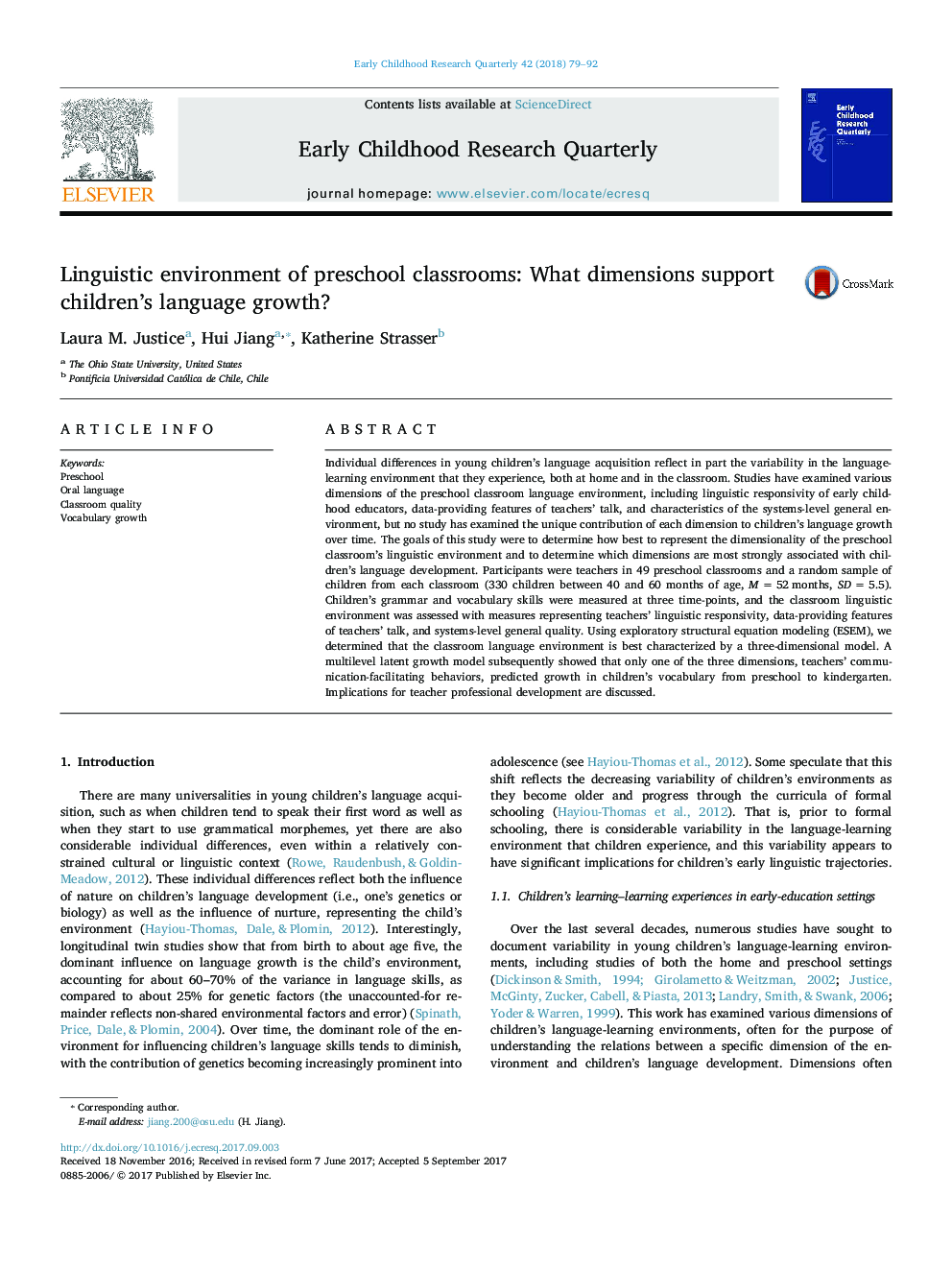| Article ID | Journal | Published Year | Pages | File Type |
|---|---|---|---|---|
| 4938164 | Early Childhood Research Quarterly | 2018 | 14 Pages |
Abstract
Individual differences in young children's language acquisition reflect in part the variability in the language-learning environment that they experience, both at home and in the classroom. Studies have examined various dimensions of the preschool classroom language environment, including linguistic responsivity of early childhood educators, data-providing features of teachers' talk, and characteristics of the systems-level general environment, but no study has examined the unique contribution of each dimension to children's language growth over time. The goals of this study were to determine how best to represent the dimensionality of the preschool classroom's linguistic environment and to determine which dimensions are most strongly associated with children's language development. Participants were teachers in 49 preschool classrooms and a random sample of children from each classroom (330 children between 40 and 60 months of age, MÂ =Â 52Â months, SDÂ =Â 5.5). Children's grammar and vocabulary skills were measured at three time-points, and the classroom linguistic environment was assessed with measures representing teachers' linguistic responsivity, data-providing features of teachers' talk, and systems-level general quality. Using exploratory structural equation modeling (ESEM), we determined that the classroom language environment is best characterized by a three-dimensional model. A multilevel latent growth model subsequently showed that only one of the three dimensions, teachers' communication-facilitating behaviors, predicted growth in children's vocabulary from preschool to kindergarten. Implications for teacher professional development are discussed.
Related Topics
Social Sciences and Humanities
Psychology
Applied Psychology
Authors
Laura M. Justice, Hui Jiang, Katherine Strasser,
